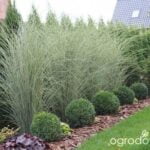Are you looking for landscaping ideas with gravel? Gravel has become a popular choice for landscaping due to its versatility, low-maintenance, and aesthetic appeal. In this article, we will explore the various ways gravel can be used to enhance outdoor spaces, as well as provide tips for selecting the right type of gravel for your landscape design.
Using gravel in landscaping has gained popularity due to its ability to add texture and visual interest to outdoor areas. It is also a cost-effective option compared to other materials, making it an attractive choice for homeowners and professionals alike. With the right selection and placement, gravel can transform any outdoor space into a charming and functional area.
In addition to its visual appeal, using gravel in landscaping offers several benefits. It provides excellent drainage, helps reduce weed growth, and is resistant to erosion. These qualities make it an ideal material for creating pathways, garden beds, and mulch alternatives. In the following sections, we will delve deeper into the different ways gravel can be utilized in landscape design and offer practical tips for implementation.
Choosing the Right Type of Gravel
When it comes to landscaping with gravel, choosing the right type of gravel is essential for achieving the desired look and functionality. There are several different types of gravel available, each with unique characteristics that make them suitable for specific landscaping purposes.
Different Types of Gravel and Their Characteristics
One of the most common types of gravel used in landscaping is pea gravel, which is small, smooth, and round. It’s popular for pathways and outdoor seating areas due to its comfortable texture and aesthetic appeal. Another option is crushed stone gravel, which is irregular in shape and provides a more rustic look. This type of gravel is often used for driveways or as a base material for hardscaping projects.
Factors to Consider When Selecting Gravel for Landscaping
When choosing the right type of gravel for landscaping, it’s important to consider factors such as color, size, and texture. The color of the gravel should complement the overall design of the landscape, while the size and texture will determine its functional use. Additionally, considering the local climate and weather conditions can help determine if a specific type of gravel is suitable for outdoor use.
Incorporating these different types of gravel into your landscaping design can add texture, depth, and visual interest to your outdoor space while also reducing maintenance requirements. With careful consideration and planning, you can select the right type of gravel that aligns with your landscaping ideas with gravel and enhances the overall aesthetic appeal of your outdoor area.
Creating a Gravel Pathway
A gravel pathway can add a charming and rustic element to any outdoor space, whether it’s in a backyard garden or leading up to the front door of a home. One of the benefits of using gravel for pathways is its versatility. Whether you’re going for a natural and organic look or a more polished and contemporary feel, there are many landscaping ideas with gravel that can suit your design preferences.
When creating a gravel pathway, it’s important to start with proper planning and design. Consider the overall layout and shape of the pathway, as well as any potential curves or slopes in the terrain. Once the design is finalized, the next step is to prepare the area by removing any existing vegetation, leveling the ground, and installing edging to keep the gravel in place.
Choosing the right type of gravel for your pathway is crucial for both aesthetic and practical reasons. The size and color of the gravel will greatly impact the overall look of your pathway, so take into account factors such as surrounding landscaping elements, architectural features, and personal style preferences.
Additionally, consider using a stabilizing grid system underneath the gravel to prevent shifting and sinking over time. Properly installed, a gravel pathway can be an attractive and low-maintenance addition to any landscape.
| Types of Gravel | Characteristics |
|---|---|
| Pea Gravel | Rounded stones that are smooth on edges |
| Crushed Stone | Irregular edges that interlock when compacted |
| Decomposed Granite | Fine texture that packs down tightly |
Using Gravel in Garden Beds
Gravel is a versatile and low-maintenance landscaping material that can be used in a variety of ways to enhance outdoor spaces. One popular way to incorporate gravel into your landscape design is by using it in garden beds as an alternative to traditional mulch. Whether you’re looking to add a modern touch or create a water-efficient garden, gravel can be the perfect solution. Here are some ideas for using gravel in garden beds:
- Create defined borders: Use gravel to create clean and defined borders around your garden beds. This can help prevent weed growth and give your garden a polished look.
- Layering with plants: Pairing gravel with drought-resistant plants, succulents, or ornamental grasses can create a stunning and low-maintenance garden bed. These plants are well-suited for the well-draining properties of gravel.
- Add texture and contrast: Choose different sizes and colors of gravel to add texture and contrast to your garden beds. This can create visual interest and enhance the overall look of your landscaping.
When using gravel in garden beds, it’s essential to consider proper installation techniques. Ensure that the soil is properly prepared before adding the gravel, and consider using landscape fabric underneath to prevent weed growth. Additionally, regular maintenance such as raking and occasional topping up of the gravel may be necessary to keep your garden beds looking their best.
Incorporating gravel into garden beds offers a sustainable and long-lasting solution for a low-maintenance landscape, making it an excellent choice for homeowners looking for an attractive yet practical design option. With the right planning and care, using gravel in garden beds can elevate the aesthetics of any outdoor space while reducing the need for constant upkeep.
Gravel as a Mulch Alternative
When it comes to landscaping, mulch is often used to retain moisture, suppress weed growth, and improve the overall appearance of garden beds. However, gravel can also serve as an effective and sustainable alternative to traditional organic mulch materials. By using gravel in garden beds, homeowners can achieve a low-maintenance and modern look that complements their outdoor space.
The Benefits of Using Gravel as Mulch
One of the key benefits of using gravel as mulch is its longevity. While organic mulch materials break down over time and need to be replenished regularly, gravel can last for many years without needing replacement. This makes it a cost-effective option in the long run. Additionally, gravel does not decompose or attract pests, making it a low-maintenance choice for homeowners.
Proper Use of Gravel as Mulch
When using gravel as a mulch alternative, it’s important to properly prepare the soil underneath to ensure adequate drainage. This may involve installing landscape fabric or creating drainage channels to prevent water from accumulating around plant roots. It’s also crucial to choose the right type and size of gravel for the intended area – smaller pea gravel works well for garden beds, while larger river rocks may be more suitable for decorative purposes in landscaping.
Incorporating gravel with drought-tolerant plants such as succulents or native grasses can further enhance the sustainability of a garden bed. These plants are well-suited for thriving in dry conditions and require minimal watering once established, making them an ideal companion for a gravel mulch landscape.
Gravel Landscaping in Xeriscaping
Xeriscaping, which is the practice of landscaping with drought-tolerant and low-water plants, has become increasingly popular in recent years. One key element of xeriscaping is the use of gravel as a sustainable and water-efficient landscaping material. Gravel not only reduces water usage but also adds texture and visual interest to outdoor spaces. Here are some tips for incorporating gravel into xeriscaping:
- Choose the right type of gravel: When selecting gravel for xeriscaping, it’s important to consider the size, color, and texture that will complement the overall design. Light-colored gravel can help reflect heat away from plants, while larger stones can provide stability and prevent erosion in dry climates.
- Integrate gravel pathways: Designing pathways with gravel in xeriscaping can create a cohesive look while minimizing the need for water-intensive grass or plantings. Use edging materials like metal or stone to contain the gravel and prevent it from spreading into garden beds or other areas.
- Incorporate native plants: Pairing drought-tolerant plants with gravel in xeriscaping can further reduce water usage and maintenance needs. Consider using native wildflowers, succulents, or ornamental grasses that thrive in arid conditions and complement the natural look of gravel.
By utilizing these landscaping ideas with gravel within a xeriscape design, homeowners can create an eco-friendly outdoor space that requires minimal watering and maintenance while still achieving a visually stunning landscape. Whether it’s creating pathways, enhancing garden beds, or designing a modern outdoor space, gravel is a versatile material that can contribute to a beautiful and sustainable xeriscape design.
Modern Landscaping Design With Gravel
The use of gravel in modern landscaping design has become increasingly popular in recent years. Gravel is a versatile and cost-effective material that can add a contemporary and sleek look to outdoor spaces. From minimalist garden beds to sophisticated pathways, there are numerous ways to incorporate gravel into modern landscaping designs.
One of the key benefits of using gravel in modern landscaping is its ability to create a clean and minimalist aesthetic. The neutral tones of gravel complement modern architecture and outdoor furniture, making it an ideal choice for contemporary spaces. Additionally, gravel can be combined with other materials such as concrete, steel, and glass to create a striking visual contrast in the landscape.
When incorporating gravel into modern landscaping design, it’s important to consider the size and color of the gravel. Smaller, smooth gravel works well for creating clean lines and geometric patterns, while larger, textured gravel can add visual interest to hardscapes. Gray or white gravel is often used to complement the clean lines of modern architecture, while colored gravels can be used selectively to add pops of color in the landscape.
Another effective way to use gravel in modern landscaping design is by creating asymmetrical pathways or patio areas with sharp angles or curves. This adds an unexpected element to the landscape and creates visual interest without detracting from the overall sleekness of the design.
Incorporating geometric shapes into your landscaping allows you to create defined lines that can still play with organic lines if needed.
| Gravel Size | Gravel Color |
|---|---|
| Small, smooth for clean lines | Gray or white for modern aesthetic |
| Larger, textured for visual interest | Colored for pop of color |
Maintaining Gravel Landscaping
In conclusion, landscaping with gravel offers a wide range of benefits and design possibilities for creating a beautiful and low-maintenance outdoor space. The popularity of using gravel in landscaping continues to grow due to its versatility, durability, and cost-effectiveness. Gravel can be used in various ways, from creating pathways and garden beds to serving as mulch or as a key element in modern landscaping designs.
When it comes to choosing the right type of gravel for landscaping, it’s important to consider factors such as size, color, and texture, as well as the specific needs of your outdoor area. Additionally, incorporating gravel into garden beds can provide a low-maintenance yet aesthetically pleasing look when paired with the right types of plants. Using gravel as an alternative mulch offers sustainability and water conservation benefits, particularly in xeriscaping and drought-tolerant landscapes.
While gravel landscaping may require minimal maintenance compared to other materials, regular upkeep is still necessary. From managing weed growth to ensuring proper drainage, maintaining a gravel landscape requires attention and care.
However, with the right techniques and understanding of common challenges, such as erosion or compacting of the gravel over time, you can continue to enjoy the beauty and functionality that landscaping with gravel has to offer. Whether you’re looking for a traditional or contemporary outdoor design, there are countless landscaping ideas with gravel that can enhance the visual appeal and practicality of your outdoor space.
Frequently Asked Questions
Can I Lay Gravel on Top of Soil?
Yes, you can lay gravel on top of soil. It’s actually a common practice in landscaping to use gravel as a decorative and functional material over soil. However, it’s important to prepare the soil properly before laying gravel to ensure proper drainage and stability.
What Can I Do With Gravel in My Yard?
There are several things you can do with gravel in your yard. Gravel can be used for pathways, driveways, edging for garden beds, or as a decorative ground cover. It’s versatile and can add both aesthetic appeal and functionality to your outdoor space.
How Do You Landscape a Gravel Area?
Landscaping a gravel area involves careful planning and design. You’ll want to create defined borders or edges for the gravel area using materials such as stones or pavers.
It’s also important to install a weed barrier under the gravel to prevent weeds from growing through. Additionally, incorporating plants, decorative features, and proper lighting can enhance the overall look of the gravel landscape area.

Welcome to my gardening blog! I am passionate about plants and enjoy sharing my knowledge and experiences with others. In this blog, I will write about everything related to gardening, from tips on how to get started to updates on my own garden projects.





